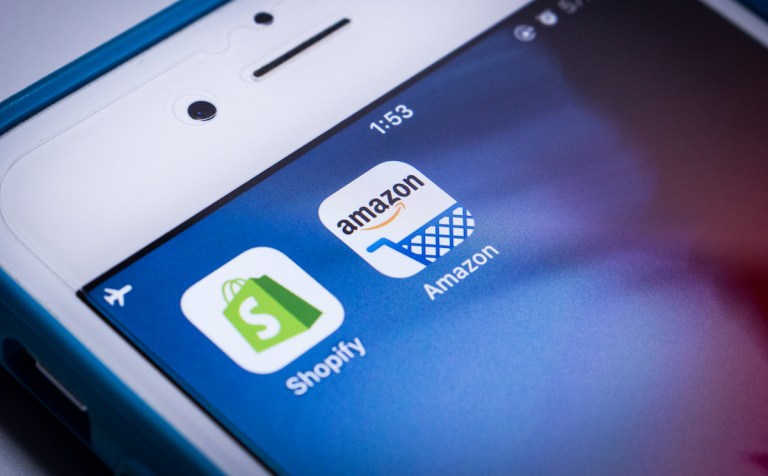Amazon’s Linkup With Shopify Uses Logistics to Stitch Together Commerce Ecosystems

Stitch together eCommerce ecosystem by eCommerce ecosystem and you get a massive ecosystem, as measured by scale.
Amazon is partnering with Shopify to allow merchants who pay for Shopify’s eCommerce tools to use Amazon’s logistics network. The tie-up underscores the ways in which logistics and fulfillment can be the needle and thread that link platforms together.
Buy with Prime is the commonality here, where Shopify merchants in the United States will be able to speed delivery to Prime members. In terms of the setup, consumers opt for the payment choice in their Amazon wallet when checking out via Shopify. It’s especially notable that, upon checking out, Amazon Pay will be offered as a payment method alongside Shopify Payments.
Payments optionality remains key for consumers. For Amazon, there’s the added benefit of bringing more merchants into the Buy with Prime fold. Amazon has long noted that the Buy with Prime option helps boost merchant conversions by 25% with what is essentially one-click functionality. That single click at the point of checkout also embeds a series of logistics and fulfillment-related ancillary revenue streams that boost Amazon’s own fortunes.
Boosting Third-Party Fulfillment
The off-platform push is happening as roughly 60% of Amazon’s eCommerce sales come from third-party sellers. The segment’s revenues were up more than 18% in the most recent quarter, as measured year on year.
And as to the fulfillment that goes on in the background, Amazon CEO Andy Jassy said on the most recent earnings call with analysts that, year to date, “we’ve delivered more than 1.8 billion units to U.S. Prime members the same or next day, nearly four times what we delivered at those speeds by this point in 2019.”
Shopify’s own earnings results illuminated how the stitching together of commerce ecosystems — and letting merchants use the Buy with Prime option — can help cement an ecosystem that traverses platforms. Gross merchandise volumes were up 17% year on year to $55 billion.
A few months back, Shopify struck a deal to offload its logistics arm, and in doing so, streamline at least some of the back-end processes that are part and parcel of, well, getting parcels to the doorstep. By embracing the Amazon network effect, the promise of speedier delivery (for the consumer) and fulfillment (for the merchant) may help boost sales conversions and merchant presence on the platform.
PYMNTS data showed that checkout is a determining feature when it comes to consumers deciding where to shop. Seventy-three percent of consumers said they would move their business elsewhere — to other merchants or platforms — when a brand does not deliver the experience they expect.
For all PYMNTS retail coverage, subscribe to the daily Retail Newsletter.